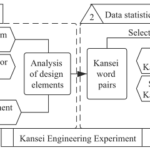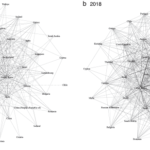
Imagine a world where the boundless creativity of nature is not only admired but actively harnessed. But how can we replicate the magic of nature in the real world of biotechnology? The answer lies in rethinking our approach to biological design.
Traditionally, we have focused on optimizing existing systems for specific purposes. However, this often leads to stagnation and missed opportunities.
Nature, on the other hand, thrives on unrestrained innovation. Darwin’s “endless forms most beautiful” were not meticulously planned; they emerged from a constant interplay of variation and selection. Similarly, technological advances and cultural trends often defy prediction, driven by the unpredictable spark of human imagination.
Instead of fixating on a “better” singular design, what if we embraced openness and novelty as guiding principles? This is the bold proposal of a new wave of biologists, advocating for prioritizing creative exploration alongside functional optimization.
A study published by researchers from the Universities of Bristol and Ghent has demonstrated how exploring the unknown can be the crucial step needed for the continuous innovation required for future biotechnologies.
Openness and novelty as tools
By recognizing the role of openness in achieving this goal and its growing importance in fields like computer science and evolutionary biology, the team outlined how openness is linked to current bioengineering practices and what it would take to achieve it in the laboratory.
To succeed, algorithms used for biological design should not solely focus on advancing toward a specific goal (such as improved performance) but also consider creating and maintaining novelty and diversity in the solutions found.
Dr. Thomas Gorochowski, co-author and researcher at the Royal Society University in the Faculty of Biological Sciences at Bristol, explained: “When we try to design a complex biological process, it’s often tempting to tweak something that works partially rather than risk trying something completely new.
“In this work, we highlight that in these situations, the best solutions often come from unexpected directions because we don’t always fully understand how everything works. In biology, there are many unknowns, and therefore, we need a broad and diverse set of basic components to ensure we have the best chance of finding the solution we need.”
What is Open-endedness?
The study’s authors note that “Open-endedness” or openness relates to a system’s ability to endlessly improve, produce novelties, or increase its complexity over time. They also indicate that open processes sometimes lack a clearly defined goal or target.
Biological systems and their innovation capacity
Professor Michiel Stock, lead author from Ghent University, added: “Biological systems have a natural innovation capacity that has resulted in the overwhelming biodiversity we see in nature today.
“Our attempts to design biology, on the contrary, lack this creativity: they are much more rigid, less imaginative, and often do not fully exploit what biology is capable of doing.
“Since all life around us originates from the open process of evolution, wouldn’t it be fantastic if we could tap into some of that power for our biological designs?”
Recommendations for the biotechnology industry
From the scientific publication, we can derive some recommendations for the biotechnology industry that promote a shift in mindset:
- Celebrate novelty: Instead of obsessing over maximum performance, reward and explore unexpected outcomes. This could involve using techniques like directed evolution but with a focus on generating diverse and surprising possibilities, not just optimizing for a specific function.
- Learn from nature: Biological systems are complex and adaptable, constantly evolving in response to their environment. We can learn from this inherent dynamism by designing systems that can adjust and learn over time, fostering a continuous cycle of innovation.
- Embrace openness: Break the rigid boundaries of traditional design processes. Encourage collaboration between diverse disciplines, foster open-source platforms to share ideas, and create environments that promote curiosity and experimentation.
By adopting these recommendations, we can unlock the true potential of biotechnology. Imagine bioremediation microbes not only cleaning pollution but evolving to address new environmental challenges. Or envision personalized medicine driven by living cells that adapt to individual needs and respond to real-time feedback. These are just glimpses of the possibilities ahead when we embrace open innovation in synthetic biology.
Conclusion
The ability to create new biotechnologies is increasingly crucial for addressing global challenges spanning sustainable production of chemicals, materials, and food to advanced therapies for combating emerging diseases. This progress is driven by innovations in how we harness biology in new ways. This work supports this goal by offering a new direction for novel research and design approaches.
The shift toward open design is not without challenges. Measuring and valuing novelty can be tricky, and navigating potential risks of unintended consequences requires careful consideration. Additionally, we need to overcome challenges such as ethical considerations, safety concerns, and the need for robust design tools.
The study was made possible by a travel grant from FWO Flanders and funding from the Royal Society, BBSRC, and EPSRC.
Reference (open access)
Michiel Stock, Thomas E. Gorochowski, Open-endedness in synthetic biology: A route to continual innovation for biological design.Sci. dv.10,eadi3621(2024).DOI:10.1126/sciadv.adi3621





